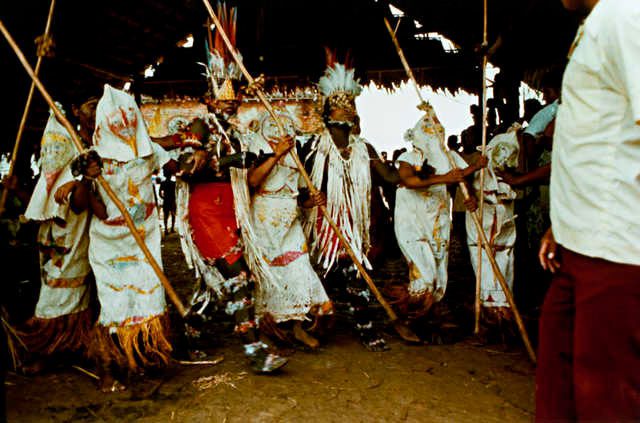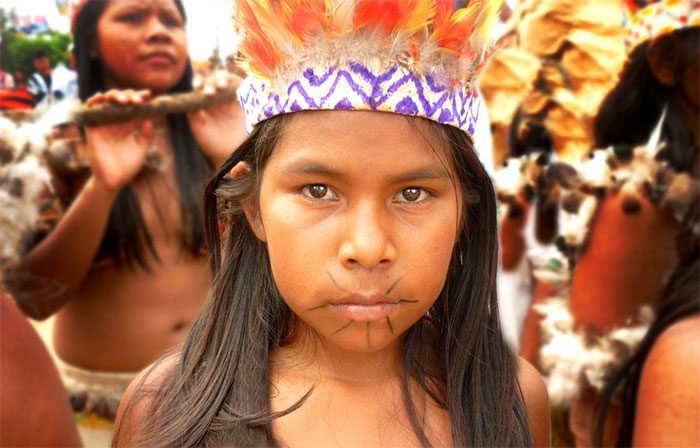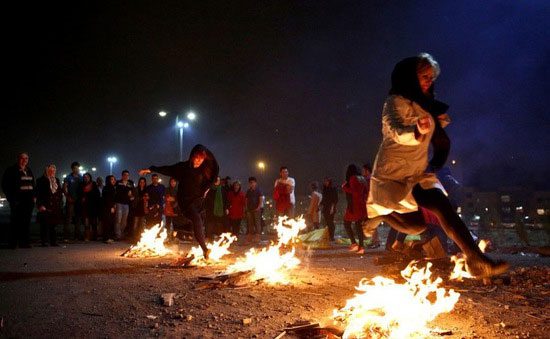It is not uncommon for cultures that are geographically close and have had strong interactions in the past to share similarities. However, finding a similarity in a custom between two communities separated by half the globe is indeed rare.
Overview of the Ticuna People
The Ticuna are an indigenous tribe in South America, currently residing in Brazil, Colombia, and Peru. They are the most populous tribe in the Amazon rainforest and are also known as Magüta, Tucuna, or Tikuna. They live in a very secluded area, far from water sources, surrounded by the territories of many other tribes.
Due to this geographical circumstance, the Ticuna have a unique genetic pool and cultural heritage compared to other ethnic groups. The geographical barriers have also protected them from many changes in the world, allowing them to maintain their original culture without damage.

Ticuna people participating in a traditional festival.
Today, the Ticuna have integrated into modern life but still preserve many ancient cultural traits. Although they often wear Western-style clothing, they occasionally don traditional outfits made from tree bark during festivals or performances for tourists. The Ticuna language is transcribed using the Latin alphabet, and they have a tradition of shamanistic worship.
The spiritual life of the Ticuna people is quite rich. Many ancient stories and deity worship practices are still maintained today. For instance, they believe that Ta’e is the guardian deity who oversees human relationships on Earth, alongside numerous tales of heroic figures who vanquish evil spirits.
The Fire Jumping Ritual and Pelazon Ceremony
The Ticuna practice the Pelazon ceremony, during which girls participate in traditional activities to prove they have reached maturity. At the end of their first menstrual cycle, young girls wear a ceremonial outfit made from eagle feathers and snail shells. They are then painted black, have their hair pulled back, and tribal symbols are painted on their heads.

A Ticuna girl.
Once prepared, the girls will jump over a fire for four consecutive days. Only upon completing this ritual are they recognized as adults and eligible to marry a boy from outside their tribe.
While the significance of the Ticuna’s “burning off bad luck” ritual symbolizes physical and spiritual maturity, it is easy to see the similarity to the custom of burning off bad luck for brides before they move to their husband’s home, which is a ritual believed to eliminate misfortunes.
Where Else Are Similar Customs Found?
If the fire jumping tradition of the Ticuna differs in meaning from the burning off bad luck ritual, a similar ceremony from ancient Persians that still exists today may surprise you.
The ancient Persians (who lived in present-day Iran and some parts of the Middle East) have a ritual called Chaharshanbe Suri performed before the New Year. During this ritual, they gather around a bonfire on the last day of the year. At sunset, everyone jumps over the fire while singing a traditional song.

Chaharshanbe Suri Festival.
This ritual is believed to purify the bad luck lingering from the previous year to welcome good fortune and prosperity for the upcoming New Year.





















































